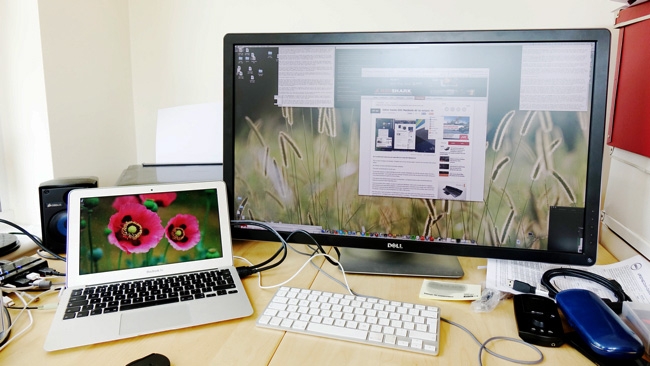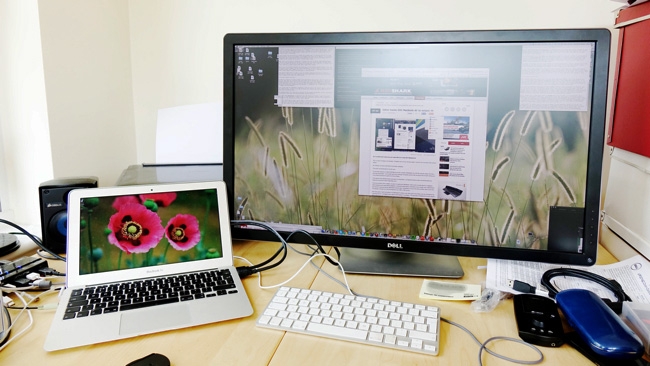
 Macbook Air outputs 4K
Macbook Air outputs 4K
An incredible hack means you can output 4K from a lowly 2011 Macbook Air
This is a story of intrigue and deception. Of battles won and lost. And won again. It goes to the very heart of the modern Zetigei.....
No. Actually, it’s none of that. But it’s still pretty interesting.
(The editor concerned was me, by the way).
I’ve just taken delivery of a Dell UP3214Q monitor for a review in RedShark. It’s a 32” 4K computer screen that has a very high specification - and a pretty high price, although I’ve already come to the conclusion that it’s worth selling your most prized possessions to get hold of one of these.
I’ll be doing a more detailed review very soon, but meanwhile, I just wanted to tell you about something that’s just happened, and which I wasn’t expecting, at all.
I’d set up my desk, which is where I sit when I’m working on RedShark. A 4K monitor is pretty ideal for a magazine editor because we’re always flitting between a multitude of applications, and there’s never enough room. Searching for documents in windows that you absolutely know are open, somewhere, is one of the worst possible uses of your time. This display is has literally four times the pixels of a 1920 x 1080 monitor.
And it was great. I had it connected to my Macbook Pro Retina, and, after quite a lot of what I can only characterise as “messing around”, I managed to get a glorious 4K display of my desktop. This generation of Macbook has some decent GPU onboard and can just about output fast enough to feed a 4K display.
I quickly found some 4K material to play, as well as some favourite photos. They all looked wonderful - not just because they were so sharp, but because they were bright and vivid as well.
All was going well until I had a problem with our broadband connection. A call to the ISP sorted that out quite quickly, but not for my Macbook, which now refused to connect to the WiFi signal at all, even though every other WiFI-connected device in the house was working perfectly.
So I decided to switch to my Macbook Air, which I always have on hand as a backup. Rather glumly I reflected that my 11” Macbook Air only has a 1280 x 720 screen. Pitifully small compared to the Dell. I wasn’t looking forward to this at all.
But at least I’d be able use the 32” Dell in 1920 x 1080 resolution. So I’d have two monitors to spread my stuff across.
Now, here come the details of the incredible 4K hack:
I plugged the cable in.
That’s it. A simple Mini Displayport to full sized displayport cable.
I booted up the Macbook and turned the Dell on, and there, to my utter disbelief, was a full 4K desktop. With none of the messing around that I had to endure with the Macbook Pro.
Now, I had no idea that this was possible, and I still don’t see how it can work. After all, this is a 2011 model Macbook air with a widely recognised lack of video power.
I should add that there is an issue with this set up. The 4K screen goes blank after a few minutes. It comes back again when it’s been turned off for a while. I’m not at all surprised by this because outputting a 4K display from a Macbook Air must be pushing the poor little computer so far outside its envelope, that it must be overheating or something. And the refresh rate is only 25Hz. But, wow. Just wow!
I’m going to test this a bit more, just to see if it can be made stable. Even if I can’t make it work full time, it’s astonishing that it can even work for a few minutes.
Of course, displaying documents on a desktop is not as gruelling as showing 4K video.
If I can get this to work, I’ll let you know. But meanwhile: well done Apple, and well done Dell: you’ve made my day!
Tags: Technology


Comments